SIDE TABLES WITH SASS: A Practical Touch of Quirk
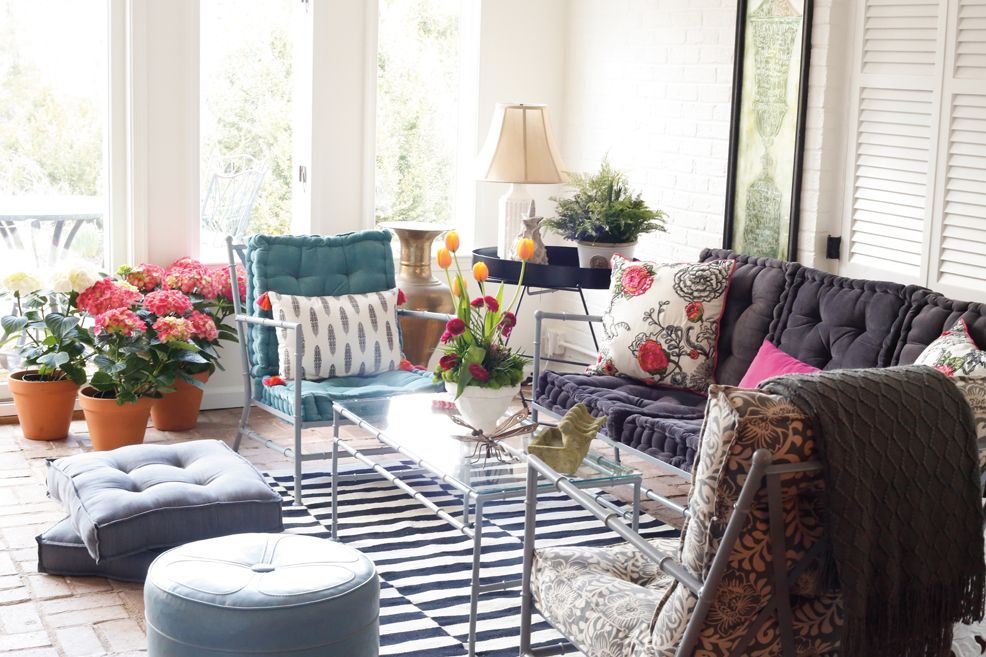
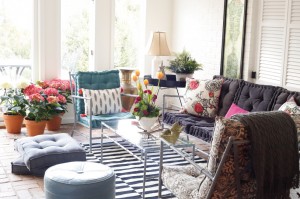 There are certain things every sitting area needs: seating, certainly—but also tabletops. This is true whether you’re arranging furniture out on a porch or in a formal living room: people need a place to lean over and put their drink. Though the sofa and chairs vie for top billing in a seating arrangement, don’t let the side tables be an afterthought. After all, they have an important job to do!
There are certain things every sitting area needs: seating, certainly—but also tabletops. This is true whether you’re arranging furniture out on a porch or in a formal living room: people need a place to lean over and put their drink. Though the sofa and chairs vie for top billing in a seating arrangement, don’t let the side tables be an afterthought. After all, they have an important job to do!
But they don’t have to be all work and no play. Side tables are one of the best ways to infuse fun or bring an entirely new element into a room. Their diminutive size (in comparison to the other, larger pieces of furniture) can help add just the right amount of whimsy to your room. Too much quirk skews towards kitsch; too little, and the attempt just falls flat and gets lost. But if you add just the right amount, it hits all the right notes and adds character.
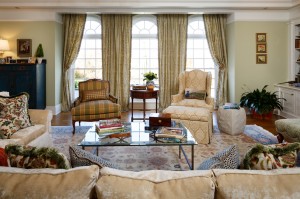 But first—why is “whimsy” important? Adding whimsy to your living spaces is not a trivial thing. A bit
But first—why is “whimsy” important? Adding whimsy to your living spaces is not a trivial thing. A bit
of the unexpected adds personality and keeps your rooms from feeling sterile and lifeless. It breathes life and playfulness into your home and is the way you can express your creativity. Choosing things that
aren’t actually tables to functionally stand in for a side table is one way to do it. Adding a delightful color, texture or shape is another way.
Now that you’re convinced you need some whimsy, here are just a few ideas to help spark inspiration for a sassy little side table.
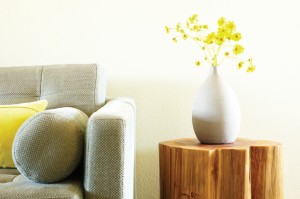 Add warmth with wood
Add warmth with wood
A side table made from reclaimed or exotic wood can add that organic warmth-giving natural element that’s both unique and inviting. Woods don’t have to “match” to look nice together—they just need to complement each other. If you have other wood furnishings in the room, look at their details and pull inspiration from there. Select a side table with similar wood tones as the grain in your other pieces.
Or, take a complete departure from the room’s predominant wood tones and add one (just one!) oddball to the mix. This is the way that one small table can have a great effect on the overall design scheme. Sofa, schmofa—all eyes are on you, little table!
Clear winners
These days, it’s a popular look to see sleek contemporary tables made entirely of clear acrylic set among more traditional furnishings. Adding a transparent table to your room will add a clean, mod edge to your décor without weighing your look down, thanks to its lack of visual heft.
As easy as clear acrylic is on the eyes, it can require a bit of special care. Dust it with a clean, dry microfiber cloth and never use abrasive cleaners on it. You need to protect acrylic from heat and liquids, so coasters are going to be a must. Never leave a spill unattended; wipe it up immediately. You’ll also want to make sure that your acrylic table isn’t set near a direct source of sunlight, or the plastic could discolor.
As long as you’re aware of acrylic’s special handling instructions, it can clearly be the right choice to lighten up the space in any conversation area.
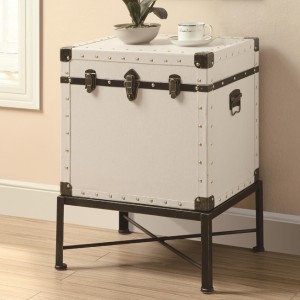 The right touch
The right touch
Smooth, soft leather…bumpy, lumpy stone…sleek surfaces that are cool to the touch—each contributes energy to a room. Many textures even give the added bonus of providing a bit of a sculptural element to the mix, too.
When it comes to accenting your décor, you can do so by adding a new texture. Think of it like this: instead of another accent color, you’re adding a new texture instead. If you’re going for a cozy look, choose natural wood or a woven surface. If “streamlined” is what you’re after, try a table made of shiny lacquer, metal, or perhaps a glossy ceramic garden stool. Glass and mirror-topped tables with open geometric details in a metal base are having a moment in home décor, too. The open designs in the metalwork lend a feeling of lightness yet still seem grounded, thanks to warm metals like brass and iron.
We humans are so in tune with our senses and the sense of “touch” is perhaps the most human experience of them all. When we layer a variety of textures into our décor, our furnishings take on lifelike qualities—making an inviting impression. Quite literally, by including a variety of textures in our rooms, we keep our decor from “feeling dull.”
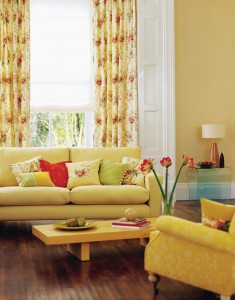 Punchy paint
Punchy paint
A pop of color can make every room more vibrant. A painted side table might be just the way to interject a blast of color and elevate an otherwise-ordinary occasional table from filler piece to center stage.
Consider painting a small table in a bright hue. It’s such an easy way to enliven a space with a dose of that color that’s been speaking to you lately—and when you find yourself drawn to a new favorite color, it’s an easy fix!
Paint has been giving vintage furnishings new life for a long time, and now it’s easier than ever to paint your furniture. The most popular types of furniture paint on the market today are milk paint and chalk paint. Milk paint gives an unpredictable, chippy/hand-worn farmhouse finish to a piece of furniture. Chalk paint gives your piece a more polished look, with deep, saturated color and a matte finish. Adding a layer of wax over milk or chalk paint will also add a bit of luster and a layer of light protection, too.
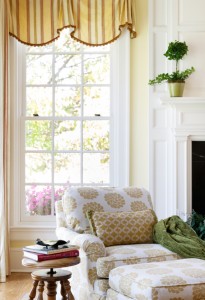 Conversation starters
Conversation starters
It’s always more interesting to be seated next to the quirky one…side table, that is! Eclectic accents and out-of-the-ordinary elements are cheerful additions that always tell a story—either about the item itself or the journey of how it was acquired. Oddities intrigue us and get people talking. Tables with a triangular tabletop, animal-esque legs or non-table things that have been repurposed for use as a table (think piano bench, vintage milk crate, bongo drum) can add just the right decorative touch to your seating arrangement and serve a useful purpose in your room, too.
Whether you find your funky, oddly shaped side table at an estate sale, flea market, your grandmother’s attic, or purchased it new—a conversation-starting side table’s main criteria is that it should be able to cleverly function for you as a surface to comfortably stash your stuff.
A good conversation area will have functional furniture, combined with a dab of visual delight. A sofa, a couple of chairs and a coffee table in the middle close enough for all to reach is a good start, but side tables are what makes the space even more comfortable, as they hold the lamps and other things that complete the arrangement. Though they may be small in stature compared to the other furnishings, a side table’s job in a seating arrangement is a mighty one—it’s expected to be ready to accept a plate, cup or saucer at any given time.
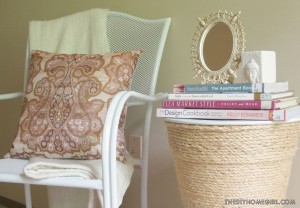 When choosing a side table, the best height will be close to the same height as the arm of the sofa or chair it’s assigned to. The side table’s scale should also be relative to its neighboring furniture, too. In other words, you don’t want to place a tiny side table next to an oversized sofa with high arms; but that tiny table would probably be lovely sitting next to a smaller chair. The two don’t have to pair up exactly; you just want someone that’s seated to be able to reach the side table with ease. Once you’ve got a handle on a user-friendly height, think outside the box and go hunting for your sofa’s or side chair’s new quirky companion.
When choosing a side table, the best height will be close to the same height as the arm of the sofa or chair it’s assigned to. The side table’s scale should also be relative to its neighboring furniture, too. In other words, you don’t want to place a tiny side table next to an oversized sofa with high arms; but that tiny table would probably be lovely sitting next to a smaller chair. The two don’t have to pair up exactly; you just want someone that’s seated to be able to reach the side table with ease. Once you’ve got a handle on a user-friendly height, think outside the box and go hunting for your sofa’s or side chair’s new quirky companion.
Contemporary Tables, Functional Furniture, Side Tables, Sitting Area






